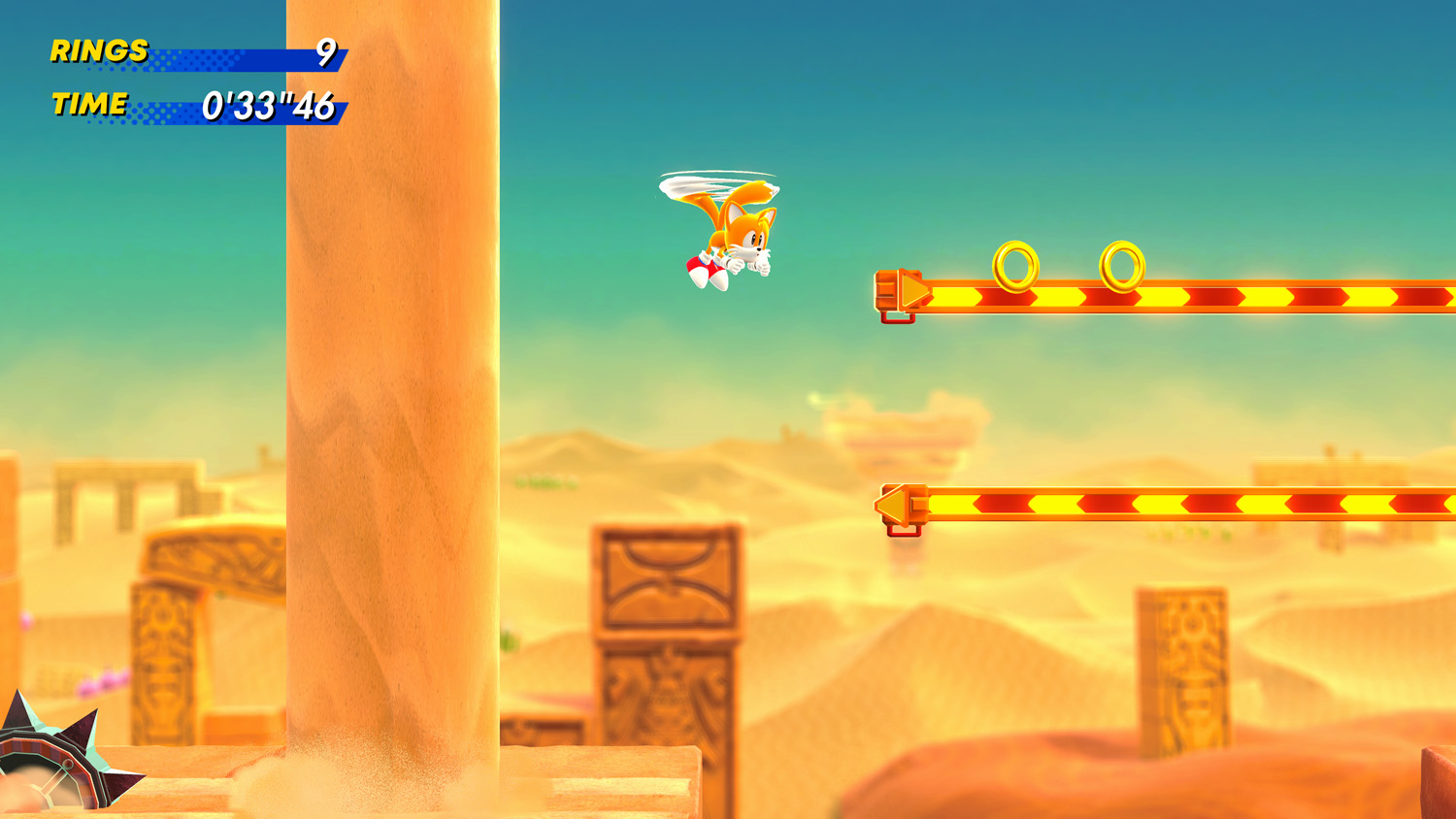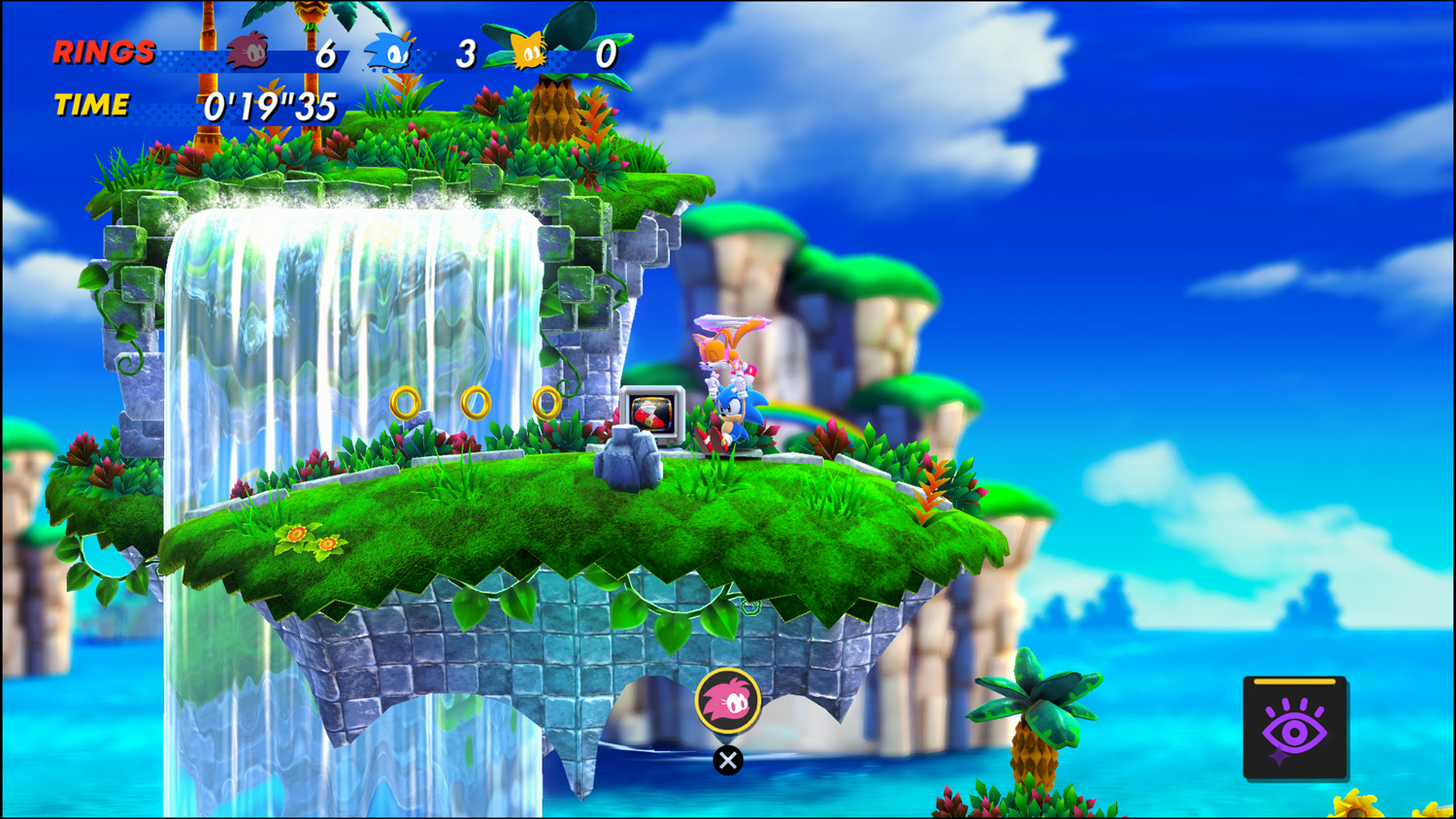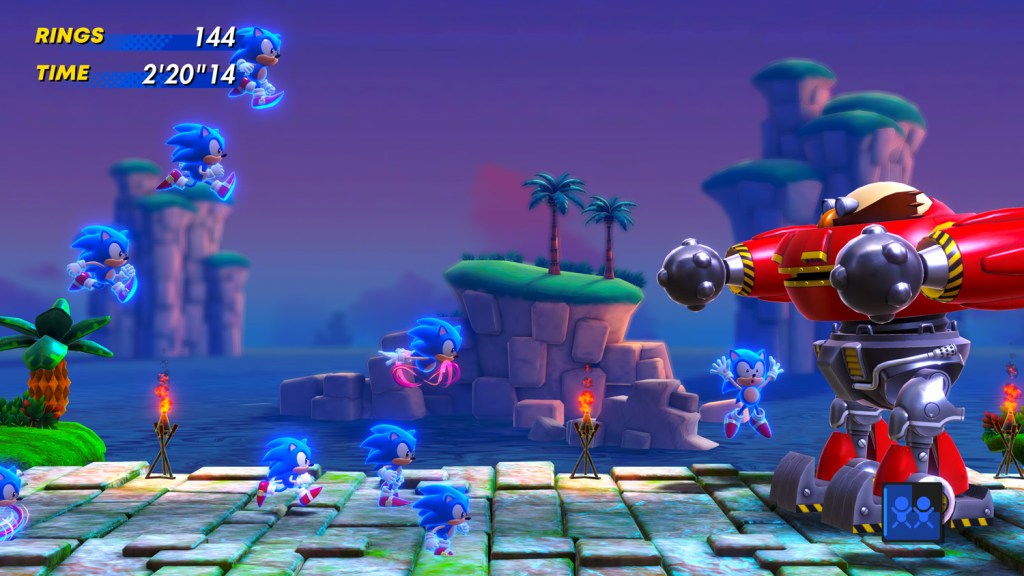Sonic Superstars review: 2D this good takes ages
A brand new 2D Sonic game that recaptures the 16-bit days

Stuff Verdict
Slightly short of super but Sonic Superstars is the closest a modern side-scrolling Sonic game comes to following up on the Mega Drive heyday.
Pros
- 16-bit era Sonic physics and animations
- Large Sonic 3-inspired multi-route stage design
- Inventive gimmicks in most levels and bosses
Cons
- Long-winded bosses, with some late-game difficulty spikes
- Emerald powers often underutilised
- Single-screen co-op far from ideal
Introduction
“To be this good takes ages, to be this good takes Sega”, so went a popular tagline in a marketing campaign for Sega’s Mega Drive console back in the early 90s. Nowadays, you can’t help but wonder if it’s more of a warning given how long it’s taken for there to be a new Sonic game that could be described as good, and whether it would take Sega itself to make a good Sonic game.
Not that there haven’t been good Sonic games in recent years, but the retro-inspired fan-developed Sonic Mania and Sonic Origins, a compilation of his 16-bit hits (with DLC later bundling in his 8-bit releases), have been retrospective in nature, forever beholden to those old Green Hills. Sonic Superstars may take the old-school side-scrolling platforming as its foundation but it’s arguably a proper brand new adventure with vibrant 3D visuals, new characters, locations and mechanics. So let’s give it a spin.
Feeling mega
From the moment you’re in control of Sonic (or his other playable pals Tails, Knuckles, and Amy), you’re instantly transported back to the familiar feel of speed and platforming from the Mega Drive era. That is fast, but not to the point the game just plays itself, while the jumping physics have the same momentum as those classic games. In other words, none of the dreadful 2D physics that plagued both the digitally released Sonic the Hedgehog 4 or other 3D Sonic games that occasionally included side-scrolling sections.
With development shared between both Sonic Team and Arzest, the latter headed up by Sonic original character designer Naoto Ohshima, characters also hark back closer to their original designs, although Amy does wield the large hammer she only got in the 3D era. Diehard fans may miss the original pixel art but these 3D visuals do a great job of emulating a lot of the classical animations, from when your character starts wobbling when standing over the edge of a platform to those pseudo-3D spinning animations that are now actually 3D.
One drawback is that some of the backgrounds look a bit bland when it’s just a blurry static backdrop. It pales in comparison to how smart tricks with a limited palette managed to make the original 16-bit backdrops look so dynamic. But for the most part, the foreground is so packed with vibrant colour that you don’t notice, and levels take inspiration from Sonic 3, not just in their large scale that means replaying will often mean you’ll end up taking a different route, but also in how the aesthetic and soundtrack also changes in a zone’s second act.
Emerald islands



The zones in North Star Islands feature many elements that recalls something from Sonic’s past – you’ve got a lush green zone, another where you’re underwater and need air bubbles to avoid drowning, another in a sky fortress, and of course one in a colourful casino-type carnival. But there’s always a little something extra in the visuals or design that means you’re not just getting a derivative throwback.
Many Sonic Superstars levels also have an interesting gimmick, whether you’re riding vines in Speed Jungle Zone or getting transformed into voxel-formed creatures in Cyber Station Zone. One especially novel twist is actually lifted from a level in Sonic & Knuckles, as you jump on switches to cool down a menacing giant robot in the background before it fully charges an instant-kill attack.
Its newest ideas however can be hit-and-miss. You still have to collect seven chaos emeralds if you want to transform into Super form, though the special stages that have you chasing after the emerald by grappling and swinging after it is pretty inventive. Each emerald also grants you a new power that can be used for a limited time, which then refreshes at each checkpoint.
They sound intriguing on paper, such as making clones of yourself that charge across the screen to attack enemies or another that reveals hidden rings and platforms. Most however don’t feel meaningfully integrated into a level since these are ultimately optional powers, while others have very limited use (one lets you traverse up waterfalls but by the time we unlocked it we had already passed any levels with waterfalls).
Scrap metal zone



Local co-op for up to four players is also as messy in practice as it sounds, which was after all introduced in the original games for a younger sibling to play as Tails without much consequence if they fell behind. It’s probably passable in a casual family scenario, as respawning back onscreen is quicker than those catch-up bubbles in the newer 2D Mario games. But a group of serious Sonic fans in a session will find keeping up frustrating, especially as the camera doesn’t track Player 1 but whoever’s ‘leading’, which does not always mean the right side of the screen.
While Superstars nails the core of what made the originals so good, the rest of the package leaves a lot to be desired. The worst offender are bosses, which on one hand have some cleverly designed attack patterns but can drag out through multiple phases, with no checkpoints in between. We’re confused why it so stubbornly commits to the pacing of the 3D games whereas the 2D games have always let you get in multiple hits at Dr Eggman and his minions. After landing a hit, the boss is given arbitrary invincibililty for a short period, also neutering the usefulness of certain emerald powers that could have made fights quicker.
Replay value is also a concern for a 2D Sonic game that’s being sold at full price even though a single playthrough should only take you around four or five hours (probably shorter if not for some of those boss fights). Of course, these games benefit from snappier pacing, with replay coming from being able to approach an act from a different route or as another character, who all feel unique enough to warrant playing as.
Different times



It does however ditch modern fixtures like a grading system or red ring challenges that provide more fixed goals for completionists that would incentivise replaying, though there’s still a time attack option where you can compete for global leaderboards. Meanwhile, an alternative campaign unlocked after rolling credits first time, while essential if you want to unlock the true ending, doesn’t add that much noticeable variation, at least not until it comes to the points that are more frustratingly difficult.
That leaves its online Battle Mode (also available in local multiplayer, thankfully in split-screen) where you can buy parts to build a custom mech to compete in mini challenges against other players, alternating between races, survival, and also a kind of naff Smash Bros with laser blasters. But the mini-games feel throwaway rather than something you’d invest much time with, and while you might enjoy replaying zones in the campaign on its own merits, you’d be less inclined to grind for medals to buy expensive mech parts. Case in point, after our first playthrough, we were still short of medals needed to buy the most expensive part worth 200 medals.
Sonic Superstars verdict



Sonic Superstars isn’t just a throwback to the hedgehog’s 16-bit era but takes that classic gameplay as a foundation for a genuinely new modern successor that succeeds in the ways that the dismal Sonic 4 didn’t. That said, just like last year’s wildly uneven Frontiers, the hits are also mixed up with misses, from disappointing multiplayer to new powers that feel more of an afterthought.
Fans will likely be divided between this and Sonic Mania (which is also available at indie prices), and if we were pitting the Blue Blur against a certain mustachioed plumber’s new 2D platformer the latter would come out on top without breaking a sweat. Nonetheless, this is still Sonic and pals as back to their groove as we could hope for.
Stuff Says…
Slightly short of super but the closest a modern side-scrolling Sonic game comes to following up on the Mega Drive heyday.
Pros
16-bit era Sonic physics and animations
Large Sonic 3-inspired multi-route stage design
Inventive gimmicks in most levels and bosses
Cons
Long-winded bosses, with some late-game difficulty spikes
Emerald powers often underutilised
Single-screen co-op far from ideal






